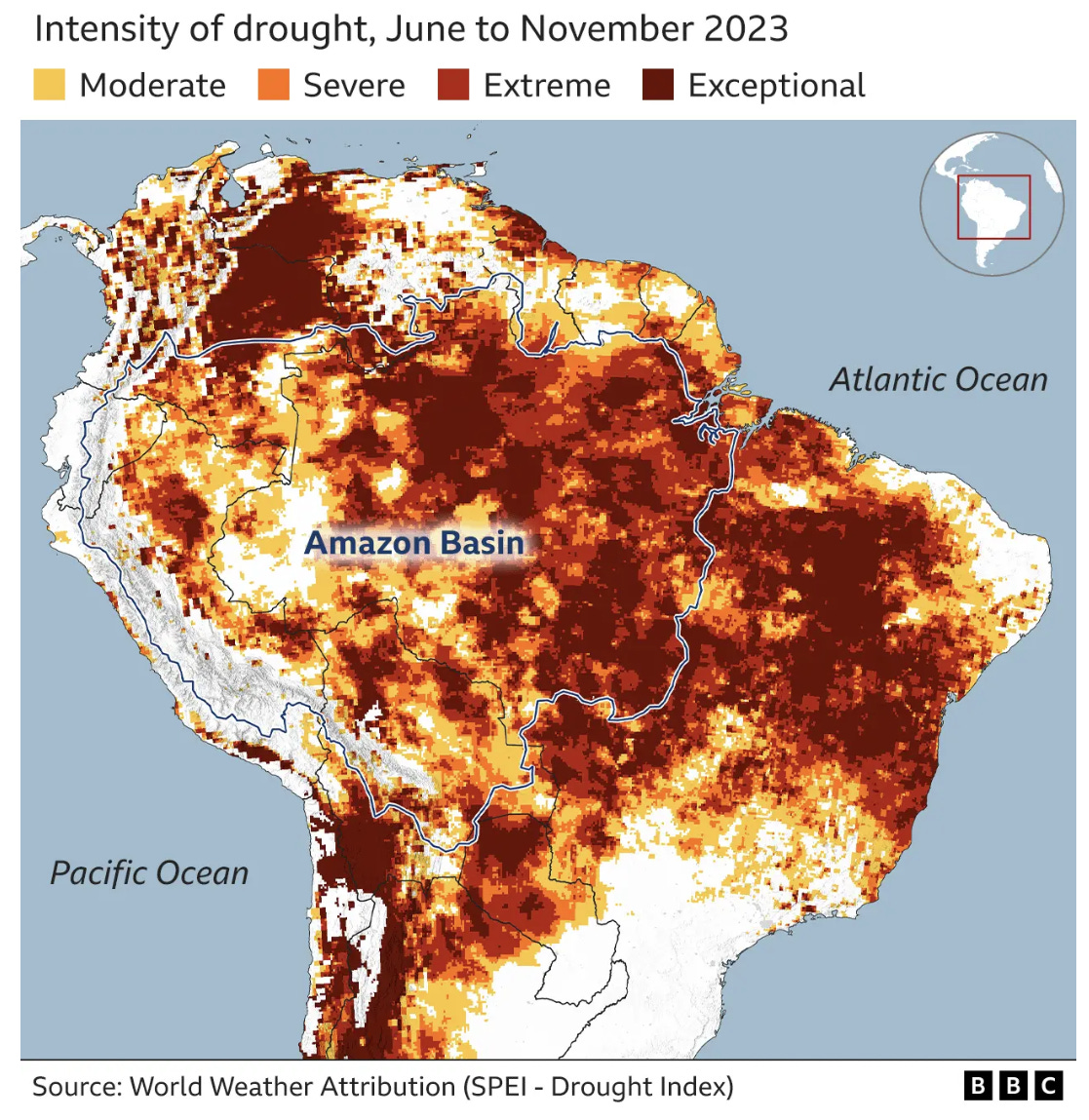Drought in the Amazon: Debunking the Propaganda
Exploring Natural Variability and Environmental Resilience Beyond the Headlines
The Amazon rainforest, often referred to as the Earth's lungs, is currently at the center of the global environmental crisis propaganda machine with headlines like these.
However, not mentioned by the MSM, this is not the first time the region has faced significant environmental stress, although these may be the worst since records began in the 1980s.
Drawing from historical events like the Grande Seca of 1877-1879, this article aims to explore the natural variability of climate in the Amazon while critically examining the ongoing changes attributed primarily to anthropogenic emissions.
The Grande Seca, a devastating drought that struck Brazil's Northeast, serves as a reminder of the region's susceptibility to natural climate variability. It resulted in the deaths of hundreds of thousands and had profound socio-economic consequences. Examining past natural events like the Grande Seca informs our understanding of the Amazon's environmental resilience and vulnerabilities.
The Amazon basin is currently experiencing a severe drought, characterized by significantly reduced rainfall and higher-than-average temperatures, which began affecting the region in 2023 and has continued into 2024.
Although the drought is likely driven by a combination of natural factors such as El Niño conditions, which tend to reduce rainfall in the region by altering atmospheric circulation patterns, the MSM continues to suggest that anthropogenic emissions are to blame. Furthermore, warm sea surface temperatures in the tropical North Atlantic have exacerbated the situation by affecting the Intertropical Convergence Zone, further reducing rainfall during the typically wetter months.
The consequences of these prolonged dry conditions include increased fire risks, significant challenges for agricultural activities, and disruptions to local economies that rely heavily on river transportation for the movement of goods and access to markets. The hydrological distress is evident with many rivers, particularly in central-eastern Brazil, showing extremely low water flows, impacting the mobility in riverside communities and affecting their access to essential goods.
Comparing current conditions in the Amazon to those of the Grand Seca reveals both similarities and differences in the scope and impact of drought events.
Keep reading with a 7-day free trial
Subscribe to Irrational Fear to keep reading this post and get 7 days of free access to the full post archives.







